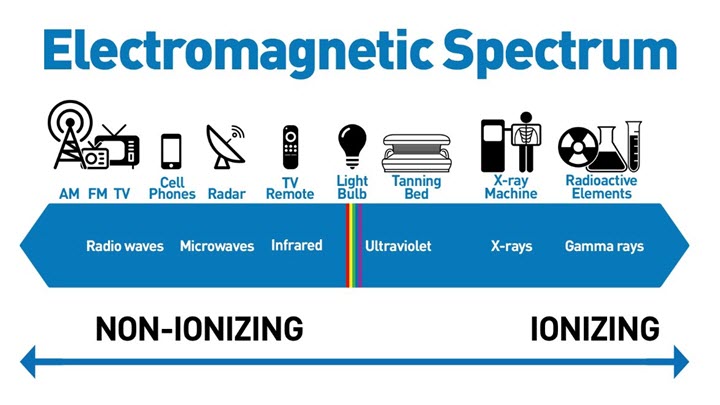
The following are some common devices that can produce ionizing radiation:
- Radiation therapy equipment: This includes medical accelerators such as linear accelerators and synchrotrons. Radiation therapy systems used for cancer treatment can generate high-energy electrons or photon radiation.
- Nuclear medicine equipment: Nuclear medicine devices such as radioactive isotope scanners (PET, SPECT, CT) and therapeutic isotope systems (for example, radioactive iodine therapy for thyroid cancer) use gamma rays emitted by radioactive isotopes for imaging or treatment.
- Nuclear reactors: Nuclear reactors used for power generation produce neutrons and gamma radiation during fission, both of which are ionizing.
- Particle accelerators: Particle accelerators used in scientific research and industry can produce high-energy particle radiation, for example proton accelerators and electron accelerators.
- Radiographic treatment devices: Some radiography and radiation therapy devices, such as X-ray machines and radiotherapy units, produce high-energy X-rays and gamma rays used in cancer treatment.
- Ultraviolet disinfection devices: Some ultraviolet disinfection systems used for air and water treatment produce short-wave ultraviolet radiation.
These devices carry potential radiation risks. When using them, applicable safety standards and operating procedures must be followed to ensure radiation is controlled and used safely. Appropriate protective measures should be taken when working with these devices or entering radiation environments, such as wearing suitable protective equipment, maintaining device safety, and performing regular safety inspections.
Differences Between Electromagnetic and Ionizing Radiation
Electromagnetic radiation and ionizing radiation are different types of radiation. The main differences are as follows.
- Physical nature:
- Electromagnetic radiation: Electromagnetic radiation is energy propagated as electromagnetic waves, including visible light, radio waves, ultraviolet, infrared, and microwave. It propagates through space as waves and is characterized by wavelength and frequency.
- Ionizing radiation: Ionizing radiation consists of high-energy particles and high-energy electromagnetic waves with sufficient energy to remove electrons from atoms or molecules. Common ionizing radiation includes alpha particles, beta particles, gamma rays, and X-rays.
- Energy and penetration:
- Electromagnetic radiation: Electromagnetic radiation spans a range of energy levels and penetration abilities. High-energy electromagnetic radiation such as X-rays and gamma rays has strong penetration and can cause ionization, while low-energy electromagnetic radiation such as visible light and radio waves has weak penetration.
- Ionizing radiation: Ionizing radiation has relatively high energy, can penetrate materials, and can remove electrons from atoms or molecules, causing ionization.
- Health effects:
- Electromagnetic radiation: Non-ionizing electromagnetic radiation (for example radio waves and visible light) generally does not directly cause ionization or immediate tissue damage. Only at sufficiently high energies (for example ultraviolet and X-rays) can electromagnetic radiation harm biological tissues.
- Ionizing radiation: Ionizing radiation can directly damage biological tissue, especially with high doses or prolonged exposure. Long-term exposure to ionizing radiation can cause DNA damage and cell mutation, increasing the risk of cancer.
Note that although most electromagnetic radiation does not directly cause ionization, long-term exposure to elevated levels of electromagnetic radiation may lead to other health issues. When using electronic devices and sources of electromagnetic radiation, follow relevant safety standards and guidance to protect individual and public health and safety.
 ALLPCB
ALLPCB







